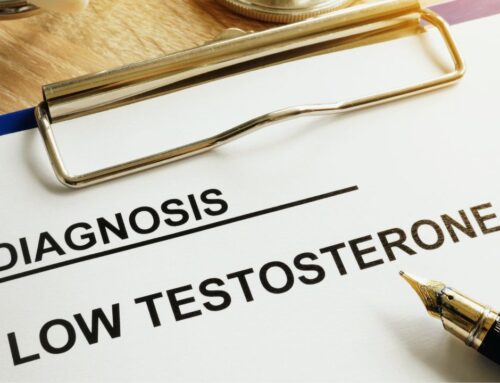PCOS affects 1 in 10 American women of reproductive age, making a PCOS test crucial for early detection and treatment. In fact, you might need testing if you experience at least two of these three key indicators: irregular periods, elevated male hormone levels, or polycystic ovaries visible through ultrasound.
Your risk of developing serious health complications increases significantly with untreated PCOS. Additionally, more than half of women with PCOS face an increased risk of type 2 diabetes. However, there’s hope – a modest weight reduction of 5% to 10% can cut insulin resistance by about half and help restore normal ovulation.
This guide will help you understand when to consider PCOS testing, recognize common symptoms, and learn about essential diagnostic procedures that your healthcare provider might recommend.
The content provided on this blog is for informational purposes only and is not intended as medical advice, diagnosis, or treatment. The topics discussed may or may not reflect the current services or treatment recommendations of KS Wellness MD. For personalized guidance and the most up-to-date information on the services we offer, please contact KS Wellness MD directly.
Recognizing Physical Signs of PCOS
Physical symptoms of PCOS often serve as the first alarm bells prompting women to seek medical care. Understanding these visible signs can lead to earlier diagnosis of PCOS and more effective treatment.
Irregular menstrual cycles: When to be concerned
Irregular or absent periods represent a hallmark sign of polycystic ovary syndrome. Notably, approximately 85-90% of women with oligomenorrhea (cycles longer than 35 days) have PCOS. You should consider a PCOS test if you experience fewer than 3-4 periods per year or go several months between menstrual cycles. Furthermore, these irregular cycles occur because PCOS affects ovulation – the process that maintains hormonal balance for regular menstruation. Missing periods completely (amenorrhea) for six months or longer requires immediate medical attention.
Excess hair growth and skin changes
Hirsutism – excessive hair growth in places where hair is usually minimal – affects up to 70% of people with PCOS. This excess hair typically appears on the face, chin, chest, abdomen, back, or upper arms. Moreover, this unwanted hair growth stems from high levels of androgens disrupting normal hair follicle function. Besides hirsutism, you might notice acne (especially on the jawline, chin, and upper neck), oily skin, or dark velvety patches called acanthosis nigricans around your neck and underarms – a visible sign of insulin resistance.
Unexplained weight gain and difficulty losing weight
Although not all women with PCOS are overweight, between 40% and 80% struggle with obesity. PCOS weight gain causes involve insulin resistance, which makes your body produce more insulin, subsequently promoting fat storage. Unlike typical weight patterns, PCOS typically causes an “apple shape” with fat concentrated around your abdomen rather than hips and thighs. Despite diligent efforts, many women describe significant difficulty with weight loss due to these metabolic changes. Even modest weight reduction can improve symptoms – research shows lifestyle modification, low-glycemic diets, and adequate protein consumption may help manage PCOS-related weight challenges.
Hair loss and thinning
Paradoxically, while excess hair appears in some areas, many women with PCOS experience scalp hair loss or thinning (androgenic alopecia). Approximately 20.3% of PCOS patients develop this condition. This hair loss typically manifests as thinning at the part line and crown of the head. The primary cause is elevated testosterone levels, which get converted to DHT (dihydrotestosterone), causing hair follicles to shrink. Unlike male pattern baldness, women with PCOS typically notice progressive thinning rather than complete baldness in specific areas.
Understanding Hormonal Symptoms
The invisible hormonal disruptions in PCOS underlie all the visible symptoms you experience. Understanding these hormonal imbalances helps clarify why PCOS manifests in such varied ways across different women.
PCOS and insulin resistance: The connection
Insulin resistance stands as a fundamental hormonal issue in polycystic ovary syndrome, affecting 70-95% of women with obese PCOS and 30-75% of those with lean PCOS. This condition occurs when your body’s cells can’t use insulin effectively, forcing your pancreas to produce extra insulin to maintain normal blood sugar. Consequently, this excess insulin triggers your ovaries to produce more male hormones.
Your body processes glucose differently with PCOS. First, insulin activates ovarian androgen production through multiple pathways. Second, high insulin levels inhibit the production of sex hormone-binding globulin (SHBG) in your liver, resulting in more free testosterone circulating in your bloodstream. Additionally, insulin acts as a co-stimulator with luteinizing hormone, further enhancing androgen production.
High androgen levels and their effects
Androgens—primarily testosterone—become elevated in PCOS due to abnormal hormone signaling. Nearly 80-90% of women with hyperandrogenism have PCOS. These elevated androgens directly prevent your ovaries from releasing eggs, hence causing irregular menstrual cycles.
Furthermore, high androgens create a cascade of effects throughout your body. For instance, they stimulate oil gland activity in your skin, leading to acne and oily skin. They also alter hair follicle function, causing excess facial and body hair while simultaneously contributing to scalp hair thinning. Above all, androgens influence fat distribution, promoting an “android” pattern with abdominal fat accumulation.
How hormones impact weight gain
Your body’s fat storage patterns change dramatically with PCOS. Generally, high insulin levels promote fat storage, particularly around your abdomen. Meanwhile, android-pattern fat distribution (apple shape) occurs because excess male hormones favor visceral fat deposition.
Interestingly, this PCOS-related weight gain creates a troubling cycle—excess fat produces more inflammatory substances, which then worsen insulin resistance, thus creating a continuous loop of hormonal imbalance. Throughout this process, brown adipose tissue function decreases with PCOS, reducing your body’s ability to burn calories effectively.
When to Seek a PCOS Test
Knowing precisely when to seek medical evaluation for polycystic ovary syndrome makes all the difference in managing this complex condition effectively. PCOS testing becomes essential once certain patterns emerge in your health.
Early warning signs that you might need a PCOS test
Persistent irregular menstrual cycles remain the most common reason women discover they have PCOS. Basically, if you experience fewer than eight periods annually or cycles consistently longer than 35 days, schedule a PCOS test. Equally important, difficulty conceiving often leads to PCOS diagnosis, as this condition is responsible for approximately 40% of female infertility. Similarly, visible signs like excess facial hair, acne, and unexplained weight gain deserve immediate attention. Primarily, these symptoms appear together rather than in isolation, creating a recognizable pattern of hormonal imbalance.
Family history and genetic factors
Your genetic makeup substantially influences PCOS risk. Research shows that if your sister has PCOS, your risk jumps to approximately 40% – much higher than the general population. Remarkably, studies suggest PCOS follows an autosomal dominant inheritance pattern with variable expression. Essentially, family medical history becomes a critical factor in determining your likelihood of developing this condition. Throughout multiple studies, researchers have found that daughters of women with PCOS have up to a 70% chance of developing it themselves. Therefore, mentioning family history of PCOS or type 2 diabetes during medical consultations helps healthcare providers assess your risk accurately.
Age considerations for testing
PCOS symptoms typically emerge during late teens or early twenties, making this an opportune time for evaluation. Nevertheless, diagnosing adolescents requires special consideration since normal puberty can mimic PCOS symptoms. Initially, healthcare providers typically recommend waiting until two years after menarche before formal evaluation. Ultimately, women discover their PCOS status at various life stages – often while investigating fertility issues in their 20s or 30s. Given the lifelong nature of PCOS, with implications ranging from metabolic to reproductive health, timely testing remains crucial for your overall wellbeing.
Essential Tests to Request When Asking for a PCOS Test
Diagnosing polycystic ovary syndrome requires a strategic combination of tests rather than a single definitive examination. Accordingly, healthcare providers typically follow established protocols to confirm PCOS diagnosis and rule out similar conditions.
Blood tests for hormone levels
Blood tests form the cornerstone of PCOS diagnosis by revealing hormonal imbalances. First, your doctor will check total testosterone levels, which are typically elevated in women with PCOS, alongside other androgens like DHEAS. Throughout this process, your provider might evaluate the LH to FSH ratio, which sometimes shows a ratio higher than the normal 1:1 in PCOS patients. Furthermore, blood tests measure sex hormone-binding globulin (SHBG), which tends to be lower in women with PCOS. Your thyroid function will also be assessed since hypothyroidism can mimic PCOS symptoms. Additionally, 17-hydroxyprogesterone testing helps exclude congenital adrenal hyperplasia.
Pelvic ultrasound: What it reveals
Pelvic ultrasound imaging plays a crucial role in visualizing ovarian structure. Specifically, transvaginal ultrasound is considered the gold standard for detecting polycystic ovaries. According to established criteria, polycystic ovaries are present when one or both ovaries contain 12 or more follicles measuring 2-9 mm in diameter or when ovarian volume exceeds 10 cm³. Nonetheless, newer ultrasound technology may identify more follicles, potentially requiring updated diagnostic thresholds. Regardless of findings, ultrasound alone cannot diagnose PCOS, as polycystic ovaries appear in approximately 23% of reproductive-age women.
Glucose tolerance and insulin testing
Given that 50-70% of women with PCOS have insulin resistance, metabolic testing becomes essential. Primarily, the 2-hour oral glucose tolerance test (OGTT) is recommended for all PCOS patients. This test measures how your body processes sugar and can identify impaired glucose tolerance or diabetes. Notwithstanding normal results, experts recommend rescreening every two years. Fasting glucose/insulin ratios provide additional insights into insulin resistance severity.
Ruling out other conditions
PCOS remains a diagnosis of exclusion, meaning other conditions must be ruled out first. Consequently, your provider will test for thyroid dysfunction, hyperprolactinemia, and congenital adrenal hyperplasia. Cushing’s syndrome testing may be warranted if you show specific symptoms like central obesity and skin changes. After completing these tests, healthcare providers typically diagnose PCOS when at least two of three Rotterdam criteria are present: irregular ovulation, clinical or biochemical hyperandrogenism, and polycystic ovaries on ultrasound.
Conclusion: Is it time for a PCOS Test?
Polycystic ovary syndrome requires careful attention to multiple symptoms and thorough diagnostic testing. Understanding these signs helps you take control of your health sooner rather than later. Blood tests, pelvic ultrasounds, and hormone level assessments work together to confirm PCOS diagnosis and rule out similar conditions.
Early diagnosis proves crucial since PCOS affects multiple aspects of your health. Therefore, watching for irregular periods, insulin resistance signs, and other symptoms helps you seek medical care at the right time. Additionally, lifestyle changes and proper medical management can significantly improve your quality of life with PCOS.
Your healthcare provider serves as your primary partner in managing PCOS effectively. While no single test definitively diagnoses PCOS, a combination of diagnostic tools helps create a clear picture. Ultimately, recognizing symptoms early and seeking appropriate testing leads to better outcomes and more effective treatment strategies.
Remember that PCOS management becomes easier with proper medical guidance and lifestyle adjustments. Regular monitoring of hormone levels and addressing insulin resistance through diet and exercise can help control symptoms effectively. Taking action early gives you the best chance at managing PCOS successfully and maintaining your overall health.
PCOS Test FAQs
What are the most common symptoms of PCOS?
The most common symptoms of PCOS include irregular or absent menstrual periods, excess hair growth on the face and body, acne, unexplained weight gain, and difficulty losing weight. Some women may also experience hair thinning on the scalp, dark skin patches, and fertility issues.
How can lifestyle changes help manage PCOS symptoms?
Lifestyle changes can significantly improve PCOS symptoms. Maintaining a healthy weight through a healthy diet and regular exercise can help regulate insulin levels and reduce androgen production. Limiting carbohydrate intake and increasing physical activity can also help manage blood sugar levels and alleviate symptoms.
What are the key indicators that suggest a need for a PCOS test?
Key indicators for PCOS testing include having fewer than eight periods per year, cycles longer than 35 days, difficulty conceiving, persistent acne, excessive facial or body hair growth, and unexplained weight gain. A family history of PCOS or type 2 diabetes also increases the likelihood of needing a PCOS test.
What can I expect when I go in for a PCOS test?
PCOS diagnosis usually involves a combination of tests, including blood tests to check hormone levels (such as testosterone and DHEAS), a pelvic ultrasound to examine ovarian structure, and glucose tolerance tests to assess insulin resistance. Your healthcare provider may also conduct tests to rule out other conditions with similar symptoms.
At what age should women consider getting a PCOS test?
While PCOS symptoms often emerge in the late teens or early twenties, there’s no specific age limit for testing. Women should consider getting tested if they experience persistent irregular periods, difficulty conceiving, or other PCOS symptoms at any age. However, for adolescents, doctors typically recommend waiting until two years after the first menstrual period before formal evaluation.



